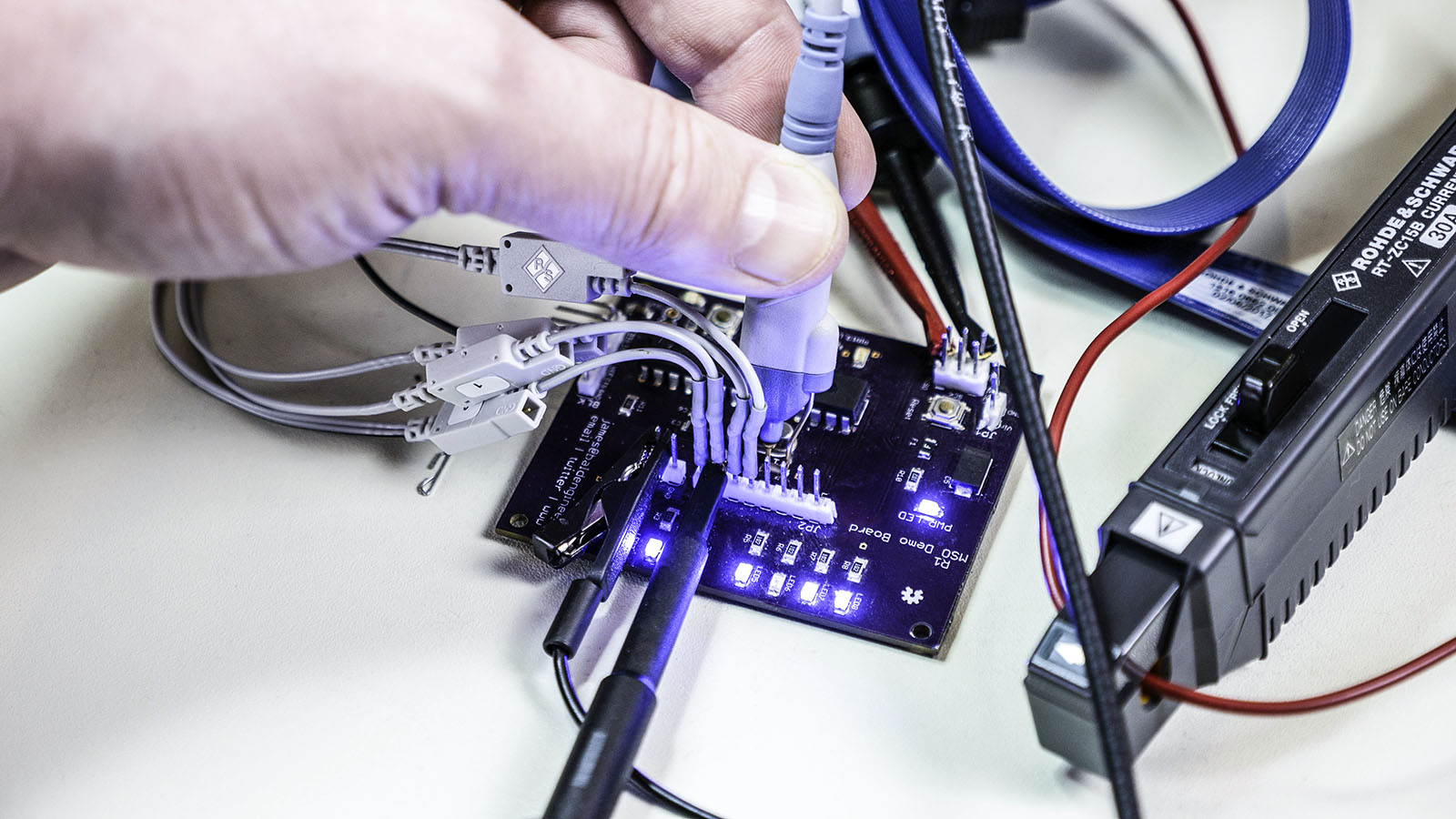The Apple II’s CPU clock has jitter or a glitch. This issue is not new—it has been present since its original design in 1977! Bald Engineer uses an oscilloscope to show how often the glitch occurs and how to correlate that jitter to its source—which is useful when you are not testing 40-year-old devices. The device under test (DUT) in this video is the Mega IIe project. It’s a fully compatible Apple IIe built around the Mega II chip.
Okay, technically, this circuit *does* use Op-Amps. However, the ones shown here are integrated into an ATmega128DB microcontroller from Microchip. The DIP package breaks out two operational amplifiers that are controllable entirely by software. Even better, you can program them like they are an Arduino!
Did you know that TTL chips do not output 5 volts? 74LS, 74HC, and 74HCT all have different input and output thresholds. Switching between logic families can be difficult if you are not careful. In this video, learn how different 7400-series logic families compare with input threshold, output voltage, frequency, rise time, and propagation delay.
Check out this TI Application Guide for a great resource on logic families.
Unless you have a BNC or SMA connector your board, you will need a probe to get signals into an oscilloscope. Understanding what kind of oscilloscope probes are out there, which ones should you have for your scope and which ones to use for different measurements can be daunting. In this post, I look at some common scope probe types and offer some suggested measurements for each.
This post is not a comprehensive guide of oscilloscope probes. I am covering the types I have used. I do think this information should be enough to least form questions to ask your vendor before purchasing. Asking questions is important. If you have never bought specialized oscilloscope probes, you might not realize they can cost more than the scope itself. Maybe not an individual probe, but get one for each channel, and the cost rises. So picking the correct probe type is essential.


